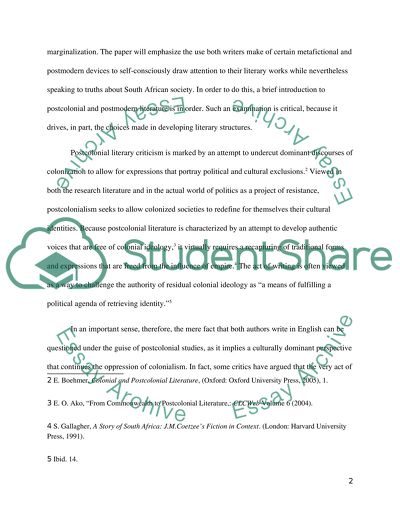Cite this document
(“Coetzees Waiting for the Barbarians and Foe, and Gordimers My Sons Essay”, n.d.)
Retrieved from https://studentshare.org/literature/1394576-coetzees-waiting-for-the-barbarians-and-foe-and-gordimers-my-sons-story-and-the-conservationist
Retrieved from https://studentshare.org/literature/1394576-coetzees-waiting-for-the-barbarians-and-foe-and-gordimers-my-sons-story-and-the-conservationist
(Coetzees Waiting for the Barbarians and Foe, and Gordimers My Sons Essay)
https://studentshare.org/literature/1394576-coetzees-waiting-for-the-barbarians-and-foe-and-gordimers-my-sons-story-and-the-conservationist.
https://studentshare.org/literature/1394576-coetzees-waiting-for-the-barbarians-and-foe-and-gordimers-my-sons-story-and-the-conservationist.
“Coetzees Waiting for the Barbarians and Foe, and Gordimers My Sons Essay”, n.d. https://studentshare.org/literature/1394576-coetzees-waiting-for-the-barbarians-and-foe-and-gordimers-my-sons-story-and-the-conservationist.


